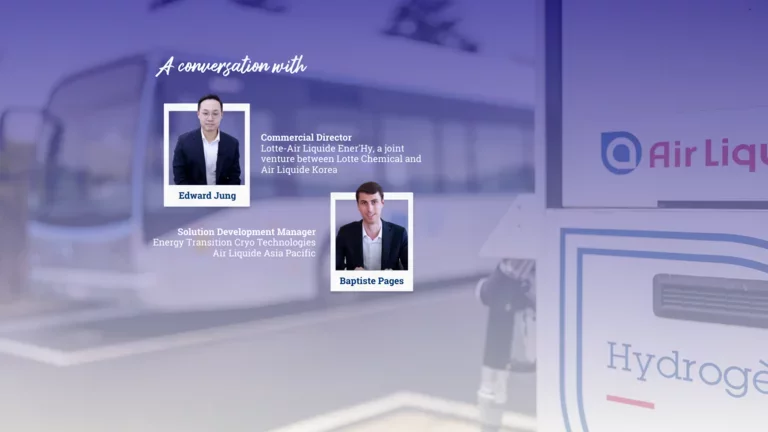Fuelling the Future with Hydrogen: Q&A with Air Liquide Experts!
Published on October 19, 2023
3 minutes

Hydrogen has long been harnessed across various industries but it is gaining remarkable traction, particularly as a promising candidate for addressing challenges in the energy and transportation industries today. In this video, we invite our Hydrogen experts, Edward Jung, Commercial Director, and Baptiste Pages, Solution Development Manager, to share their thoughts on the versatility of hydrogen and its potential as an energy vector for a low carbon future, with a focus on heavy duty mobility.
Transcript available in Chinese (Simplified and Traditional), Japanese and Korean:
-
Chinese (Traditional)
Download the document PDF (233.24 KB) -
Chinese (Simplified)
Download the document PDF (227.93 KB) -
Japanese
Download the document PDF (196.25 KB) -
Korean
Download the document PDF (207.87 KB)
What are the uses of hydrogen?
Well, did you know that for many years, hydrogen has been widely used in various industries? Apart from being a key element in many industrial processes, Hydrogen is a versatile energy carrier that can be stored and transported on demand.
In fact, it is particularly well suited for energy intensive transport modes such as taxi fleets, trucks, ships, and planes! But then, you could be wondering how different it is from battery vehicles. Baptiste, over to you.
Yes, that's a fair question, let me try to put it this way. Both battery cars and hydrogen cars are like different "tools" in the energy transition toolbox. And like any toolbox, each tool has its own use case!
Hydrogen vehicles can contain more energy in a smaller mass due to its higher density, which is important for heavy-duty vehicles transporting large volumes of goods or passengers. It can also be refuelled in just 5 to 15 minutes. This faster turnover and longer distances of more than 500km make hydrogen vehicles more suitable than its electric counterparts for commercial fleets.
How is Hydrogen produced and used for transportation?
Well, Hydrogen is almost always combined with other elements, so it needs to be extracted.
One way is to split water molecules to obtain the hydrogen through a process known as electrolysis. It can also be obtained through methane from natural gas or biogas produced from raw materials. After the production, hydrogen is compressed and delivered to a Hydrogen Refuelling Station either in gas or liquid state. At the station, it is refuelled into the vehicles which is as easy as any petrol station!
At this point, you must be wondering if hydrogen is really renewable.
Yes and in fact, production capacities are being developed just for that, as it is important for hydrogen to be as low carbon as possible if we want to decarbonise.
By coupling electrolysis with renewable power, we can produce hydrogen of renewable origin. For regions that lack a renewable source, carbon capture could help to lower the carbon footprint of hydrogen.
Ultimately, we should aim for a robust, low carbon hydrogen supply chain from production, transport, utilisation, up to sequestration.
Only then, it is possible to scale up the adoption of hydrogen in a sustainable manner.
Is hydrogen the answer to emission-free transportation?
It is really about bringing the right tool to the right application - Hydrogen is already part of the energy transition strategies of many countries around the world who realise that it is a key pillar of energy transition and especially in mobility, where it helps to unlock the decarbonisation of transport sectors with high carbon emissions such as heavy duty vehicles, commercial fleets, ships, and tomorrow, aeroplanes.
It certainly has the potential to revolutionise energy and mobility markets if we can build an optimal supply chain.
Let's work together for a low carbon future!